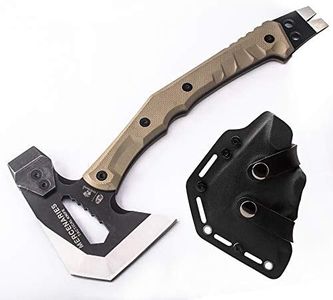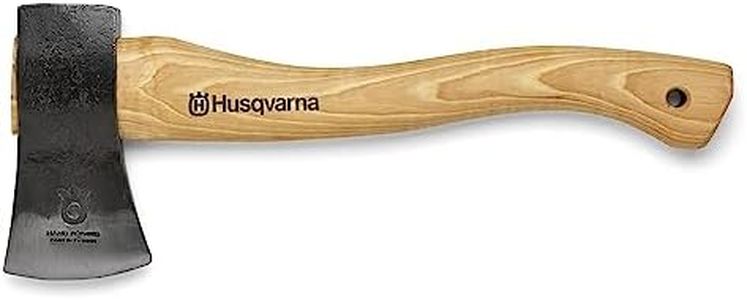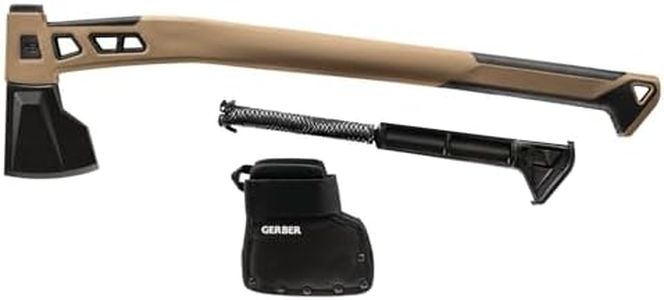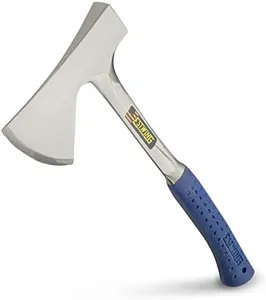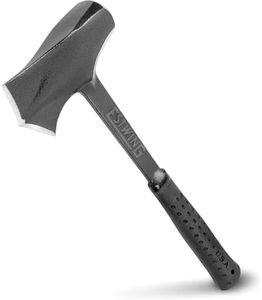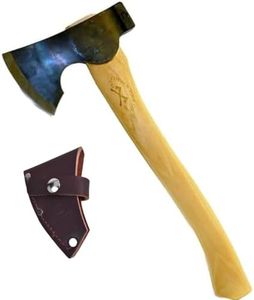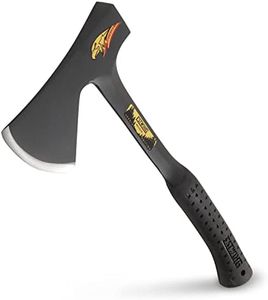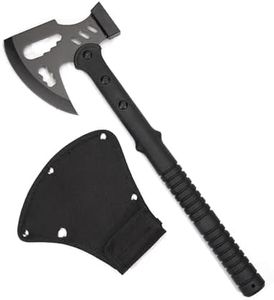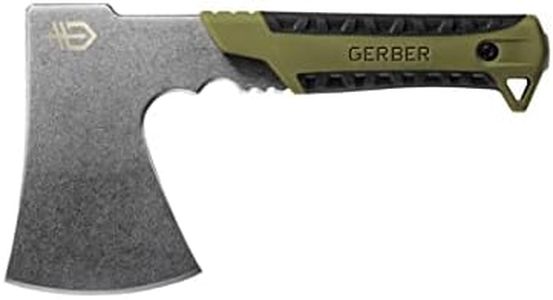We Use CookiesWe use cookies to enhance the security, performance,
functionality and for analytical and promotional activities. By continuing to browse this site you
are agreeing to our privacy policy
10 Best Camp Axes
From leading brands and best sellers available on the web.By clicking on a link to a third party's website, log data is shared with that third party.
Buying Guide for the Best Camp Axes
Choosing the right camp axe can make your outdoor adventures safer and more enjoyable. Whether you're prepping firewood, clearing brush, or handling general campsite tasks, knowing what to look for will help you pick an axe that fits both your needs and physical abilities. Think about what you'll mostly use the axe for, how much you want to carry, and your own comfort with handling tools. Getting familiar with the key aspects of a camp axe will ensure you make a choice that feels right when you're out in the wild.Axe Size and WeightThe size and weight of a camp axe refer to its overall length and heaviness. These factors are important because they affect the tool’s portability and ease of use. Smaller, lighter axes—often called hatchets—are easier to carry and handle, especially on long hikes or when backpacking, but they may not be able to tackle large logs or tough chopping tasks effectively. Medium-sized axes are more versatile, suitable for both splitting and chopping, while full-size axes offer more power for heavy-duty work but can be awkward to carry. Consider your main tasks and how much you’re willing to carry when deciding on the right size and weight.
Handle MaterialHandles can be made from wood, fiberglass, or metal. Wood handles give a classic feel and absorb shock well, making them comfortable for extended use, but they can break or warp if not cared for. Fiberglass handles are durable and resistant to weather, making them a popular low-maintenance choice, while metal handles are the toughest but might transmit more shock to your hands. Choose the material based on how much maintenance you’re willing to do, the typical weather conditions where you camp, and the feel you prefer when swinging the axe.
Blade Shape and SharpnessThe blade, or head, shape determines how well the axe chops, splits, or carves. A wide, wedge-shaped blade is great for splitting wood, as it forces the log apart, while a thinner, sharper blade excels at chopping and limbing small branches. Some axes strike a balance and handle both tasks fairly well. Sharpness is important too—sharper blades cut more efficiently but need regular upkeep. Reflect on what jobs you’ll do most and pick a blade shape that suits those tasks; also think about how often you can resharpen the blade in the field.
Ergonomics and GripErgonomics refers to how comfortable and secure the axe feels in your hands. A good grip—often shaped or textured—helps prevent slipping during use, especially if your hands are sweaty or wet. Some handles have curve or swell designs for better control. If possible, test the feel before buying, or look for handles that have positive reviews on comfort, especially for your size of hand and intended usage. Prioritize a comfortable, secure grip to ensure safety and efficiency when swinging your axe.
Durability and MaintenanceDurability involves how well your axe stands up to the elements and repeated use, while maintenance is about how easy it is to keep the axe in good working condition. Higher-quality materials and construction will handle the stress of repeated swings and harsh weather, while requiring less frequent repairs. Lower-maintenance axes are great if you prefer to spend your time camping rather than fixing gear. Think about how often you plan to use the axe and in what environments, then pick a model that balances durability with ease of care for your camping style.
Safety FeaturesSome camp axes include design features for added safety, such as non-slip handle coatings, secure head attachments, or even sheaths for covering the blade. These elements can reduce the chance of accidents during carrying or use. If you are newer to using axes or plan to camp with family or groups, prioritizing these features adds extra peace of mind. Always match the level of safety to your own comfort and skill level.
